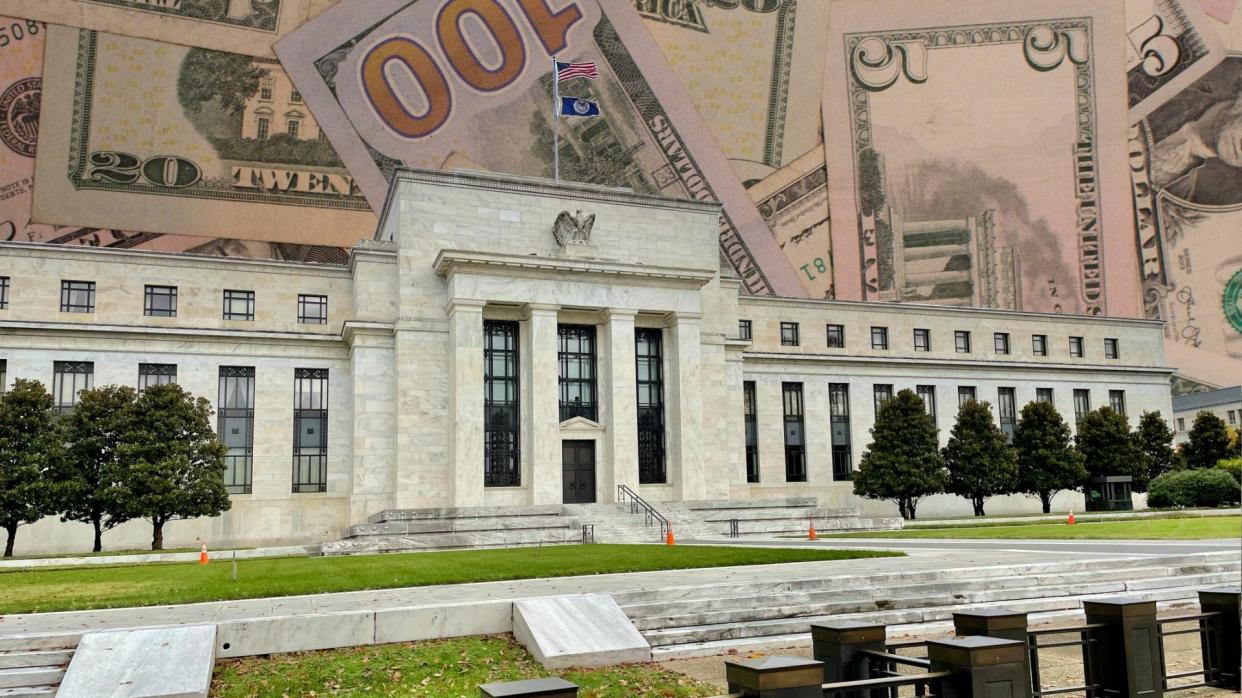Inflation Is at Historic Highs — Here’s What Could Have Been Done To Prevent It

In April 2022, inflation in the U.S. hit 8.5%, the highest rate since December 1981. But even that figure doesn’t encapsulate the pain being felt by the American consumer. Gas prices, for example, shot up an astonishing 48% on a year-over-year basis.
See: 6 Signs You Can’t Afford To Retire
Find: How Rich Is Former President Donald Trump?
A wide variety of factors have contributed to the high inflation rate, from persistent supply chain issues and the war in Ukraine to skyrocketing housing prices and rents. While there is never a single cause of inflation, various policy decisions from the U.S. government and the Federal Reserve Board over the past two years have been cited as major contributors to the current inflationary predicament. In terms of measures that could have been controlled, they certainly stand front and center.
Stimulus Checks Could Have Been Limited
The economic devastation wreaked by the rapid onset of the coronavirus pandemic was unprecedented. Seemingly overnight, the U.S. unemployment rate skyrocketed, and the stock market suffered a historic drop. The unemployment rate, for example, reached 14.8% as rapidly as April 2020, the highest reading since data collection began in 1948. Similarly, the S&P 500 stock index fell over 30% in just 22 days, marking the fastest decline in history.
Against this backdrop, the U.S. government began its own unprecedented stimulus program, ultimately pumping an astonishing $5 trillion into the U.S. economy. Of this amount, approximately $1.8 trillion went right into the pockets of U.S. consumers, with $817 billion of that coming in the form of stimulus checks.
Live Blog: SNAP (Food Stamps), Social Security Benefits and More
Economic reports indicate that these stimulus packages, including the direct payments, may indeed have saved the economy from tipping over. An analysis of Census Bureau data by the University of Michigan indicated that the stimulus checks helped Americans buy food and pay bills while simultaneously reducing stress and depression.
The flip side is that this flood of stimulus money almost inevitably contributed to the sharp rise in inflation occurring in 2022. Researchers at the Federal Reserve Bank of San Francisco quantified this amount, finding that about 3% of the jump in inflation by the end of 2021 could be attributed to the stimulus.
The Fed Could Have Acted Sooner
The Federal Reserve Board manages the level of the federal funds rate, which is interest rates that banks pay one another for overnight loans. But in a broader sense, the fed funds rate has a ripple effect throughout the economy that affects interest rates on everything from credit card and auto loans to savings accounts. As such, the Fed has tremendous power to loosen or restrict the flow of capital across the country. So, when the Fed “raises interest rates,” it tends to cool down the economy, and vice versa.
In addition to boosting the fed funds rate, the Fed can slow or reduce its purchase of government, a process known as “tapering.” When the Fed buys bonds, it reduces their market interest rates. If the Fed tapers, on the other hand, interest rates rise. This makes tapering another tool the Fed can use to raise interest rates and slow market activity.
The criticism the Fed is currently encountering is for being “asleep at the wheel” while inflation went soaring higher. In mid 2021, when inflation reached 5%, Fed Chairman Jerome Powell infamously said that he believed the spike in inflation was “transitory,” negating the need for any moves in the fed funds rate. Noted economist Mohamed El-Arian told CNBC in December 2021, “The characterization of inflation as transitory is probably the worst inflation call in the history of the Federal Reserve, and it results in a high probability of a policy mistake.”
In El-Arian’s view, the Fed’s reluctance to act contributed to rising inflation rates. The Chief Economic Advisor for Allianz suggested three policy changes in December 2021 that in his view would stop the inflation crisis, saying, “I would 1) be very open and honest as to why I got the inflation call wrong and try to regain the inflation narrative. 2) I would go even further than doubling the rate of taper, and 3) I would open it up to the possibility that rate hikes may come faster than what the market has.”
The Fed has recently stepped up its rhetoric regarding raising the fed funds rate more aggressively and increasing the rate of its taper. The question remains whether it’s too little, too late.
Walking the Tightrope
In a sterile, academic setting, certainly some tweaks could have been made to both the stimulus payments and the fed funds rate to strike a perfect balance of inflation, employment and economic growth. But when in the midst of unprecedented spikes in unemployment, drops in the stock market and global lockdowns, rapid decisions had to be made, and policy makers tend to err on the side of excess growth rather than depression.
Even the Federal Reserve Bank of San Francisco report, which attached a 3% growth in the inflation rate to the stimulus packages, acknowledged that “without these spending measures, the economy might have tipped into outright deflation and slower economic growth, the consequences of which would have been harder to manage.”
This acknowledges the fine line that policy makers have to walk. Nevertheless, perhaps the economic effects of the past two years can inform future policy to help lawmakers and the Fed strike a better balance during the next crisis.
More From GOBankingRates
This article originally appeared on GOBankingRates.com: Inflation Is at Historic Highs — Here’s What Could Have Been Done To Prevent It

